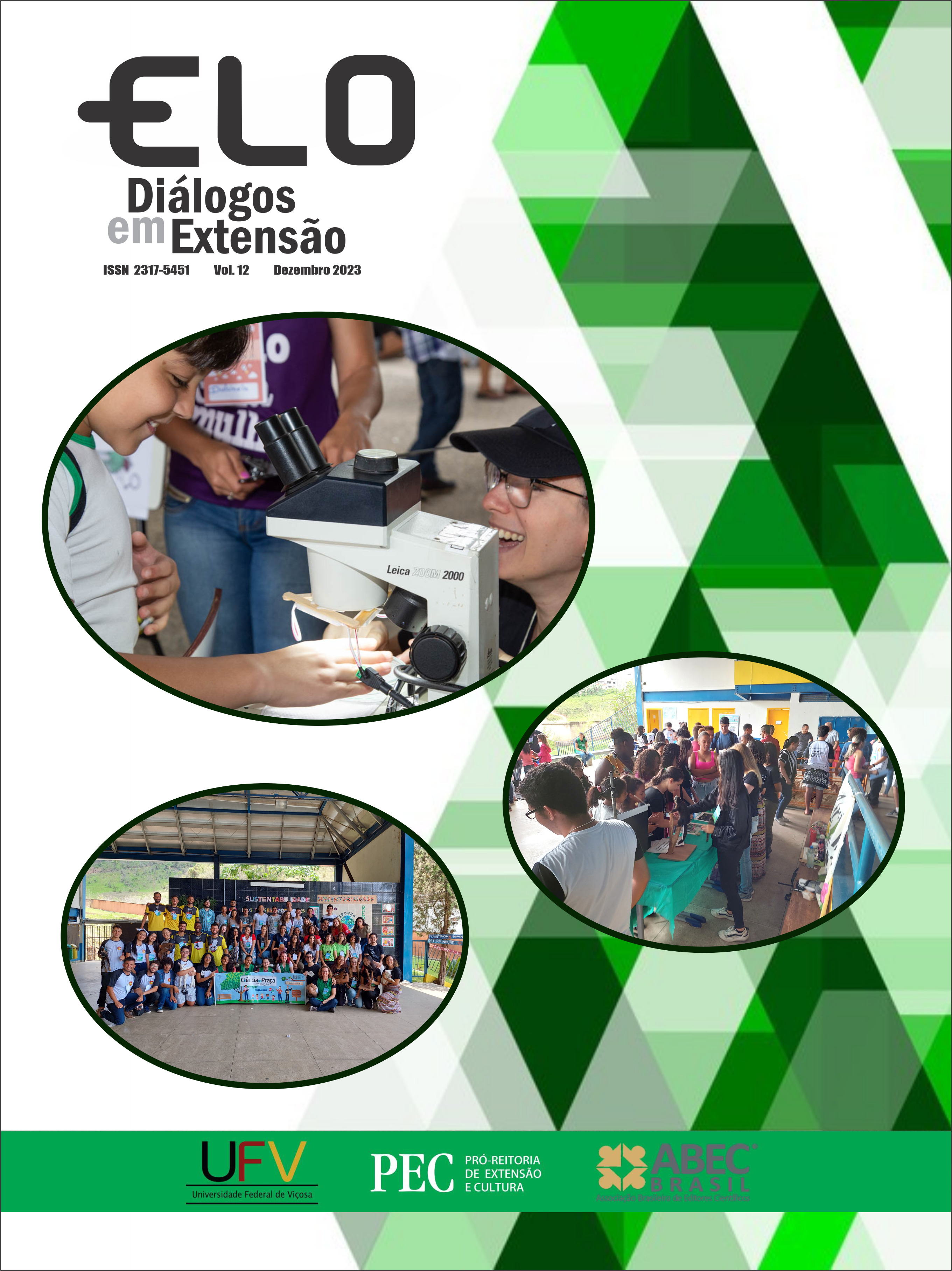The use of three-dimensional models as a learning tool in environ-mental education
DOI:
https://doi.org/10.21284/elo.v12i.16578Keywords:
Teaching-learning, Models, EnvironmentAbstract
This report refers to an extension activity, called a models workshop, carried out by the proponent professors with the students of the Environmental Engineering course of the University of the State of Minas Gerais (UEMG) - Passos Unit. The main objective was to enable graduate students to reinforce the learning of the themes and concepts treated in the academy, for the preparation of thematic models that have been and will continue to be presented in educational events and exhibitions, in order to make people aware of the importance of environmental protection. We believe that the approach, through models, of the issues that involve Environmental Education is an effective way to teach environmental concepts to people, especially to children and young people. The models allow their observers to better visualize and understand natural systems and the impacts of human activities on the environment.
Downloads
References
BRASIL. Ministério de Educação e Cultura. Lei nº 9394/96, de 20 de dezembro de 1996. Estabelece as diretrizes e bases da educação nacional. Brasília: MEC, 1996. Disponível em: https://www.planalto.gov.br/ccivil_03/leis/l9394.htm. Acesso em: 20 ago. 2023.
BRASIL. Ministério de Educação e Cultura. Parâmetros Curriculares Nacionais. Secretaria de Educação Fundamental. - Brasília: MEC/SEF, 1998. Disponível em: http://portal.mec.gov.br/seb/arquivos/pdf/blegais.pdf. Acesso em: 20 ago. 2023.
CALLAI, Helena. Copetti. A formação do profissional da geografia. Ijuí: UNIJUÍ, 2005.
CASTROGIOVANNI, Antônio Carlos; CALLAI, Helena Copetti; KAERCHER, Nestor André. Ensino de Geografia: práticas e textualizações do cotidiano. Porto Alegre: Mediação, 2017.
DE OLIVEIRA, Antônio Enagio Faria; VIEIRA, Cilene Daudt; ALVES, Wendel Guimarães; LEÃO, Otávio Miguel Rocha. Uso de oficinas de maquete como subsídio pedagógico para o ensino de geografia física: experiência na bacia hidrográfica do Rio Alcântara, São Gonçalo, RJ. In: XVII Simpósio Brasileiro de Geografia Física Aplicada. Campinas/SP, 2017.
FELCHER, Carla Denize Ott; BIERHALZ, Crisna Daniela Krause; DIAS, Lisete Funari. Construindo maquetes - uma estratégia didítica interdisciplinar no eixo geometrias: espaço e forma. Revista Científica em Educação a Distância, v. 5, n. 2, 2015. Disponível em: https://eademfoco.cecierj.edu.br/index.php/Revista/article/view/238/141. Acesso em: 28 set. 2023.
ONU BR - ORGANIZAÇÃO DAS NAÇÕES UNIDAS NO BRASIL. A Agenda 2030. 2015. Disponível em: https://nacoesunidas.org/pos2015/agenda2030/. Acesso em: 20 ago. 2023
PITANO, Sandro de Castro; ROQUÉ, Bianca Beatriz. O uso de maquetes no processo de ensi-no-aprendizagem segundo licenciandos em Geografia. Educação Unisinos, [s.l.], v. 19, n. 2, p. 273-282, 2015. DOI: http://dx.doi.org/10.4013/edu.2015.192.11. Disponível em: https://www.redalyc.org/articulo.oa?id=449644340012. Acesso em: 06 set. 2023.
SILVA, Marcos José Risuenho Brito; GOMES, Lais Cristina Pereira da Costa; DE MATOS, Elizeth Costa Oliveira. Maquetes para educação interativa em microbiologia no estudo da mor-fologia de microorganismos. Revista Brasileira de Educação e Saúde, [s.l.], v. 8, n. 3, p. 62-66, 2018. DOI: http://dx.doi.org/10.18378/rebes.v8i3.5899. Disponível em: https://www.researchgate.net/publication/330881036_Maquetes_para_educacao_interativa_em_microbiolo-gia_no_estudo_da_morfologia_de_microorganismos/fulltext/5c598dfe299bf1d14cadb407/Maquetes-para-educacao-interativa-em-microbiologia-no-estudo-da-morfologia-de-microorganismos.pdf. Acesso em: 06 set. 2023.
VALENTIN, Leirí; SANTANA, Luis Carlos. Concepções e práticas de educação ambiental de professores de uma escola pública. Ciência & Educação (Bauru), 2010, v.16, n. 2, p. 387-399. DOI https://doi.org/10.1590/S1516-73132010000200008.
Downloads
Published
How to Cite
Issue
Section
License
Copyright (c) 2023 Revista ELO – Diálogos em Extensão

This work is licensed under a Creative Commons Attribution 4.0 International License.
Authors who publish in this journal agree to the following terms:
A. Authors grant the journal the right of first publication, with the work simultaneously licensed under the Creative Commons Attribution License which allows the sharing of work with acknowledgment of authorship and initial publication in this journal.
B. Authors are authorized to take additional contracts separately, for non-exclusive distribution of the version of the work published in this journal (e.g. publish in institutional repository or as a book chapter), with acknowledgment of authorship and initial publication in this journal.
C. The journal holds the right to make format, orthographic and grammatical changes in the article to ensure the language standards, respecting the author’s style as well.
D. The opinions expressed by the authors are of their exclusive responsibility.















